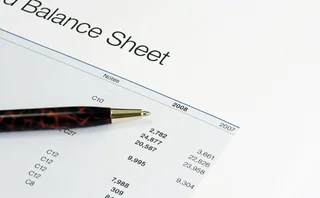
Clearing single-name CDSs may prove uneconomical
High margin requirements may make central clearing of single-name credit default swaps (CDS) impossibly expensive, according to one clearing specialist.
Liffe, the London-based derivatives arm of NYSE Euronext, launched its platform on December 22 in partnership with London-based clearing house LCH.Clearnet. The facility was rolled out to clear trades linked to series 8, 9 and 10 of the Markit iTraxx Europe, Hi-Vol and Crossover indexes.
Liffe wants to extend the service to single-name trades later this year. However, Simon Grensted, the managing director of business development at LCH.Clearnet, said the volatility and counterparty risk associated with single-name CDSs could necessitate substantial revisions to margin, collateral and default fund contributions by clearing members.
"Clearing has to be financially viable for the user. The amount of collateral a user will be required to be put up may be uneconomic compared with the needs of a clearing house to call sufficiently high margins to protect itself," said Grensted.
Uwe Schweickert, senior vice-president at Frankfurt-based Eurex, which plans to clear trades linked to series 7, 8, 9, 10 and 11 of iTraxx Europe, Hi-Vol and Crossover indexes this quarter, agreed that the clearing of single-name CDS trades will be more difficult than indexes. Nonetheless, he hopes to clear single-name contracts in the second half of this year.
"Single names are harder to process than index CDSs and, as central clearing is effectively insurance against counterparty default, I expect the insurance premium to be higher for single names," he said.
Heightened fears over counterparty risk, particularly since the collapse of Lehman Brothers on September 15, is likely to influence margin payments. CDS spreads on many major dealers soared in the wake of the Lehman Brothers bankruptcy. At the same time, recovery rates on the obligations of some defaulted firms have been lower than expected. The collapse of another major dealer, at the same time as a succession of defaults with low recoveries, could mean the clearing house is left having to make hefty payments to make good on the trades in which the defaulted dealer sold protection.
LCH.Clearnet requires clearing members to make an initial margin payment, along with daily variation margin payments, which are used to close out positions and pay off losses in the instance of a member default. If margin payments prove insufficient to cover losses, the clearing house has recourse to a £594 million default fund, also contributed to by clearing members.
Grensted speculates hundreds of millions of pounds will need to be added to the default fund by clearing members if the service extends to single names. Currently, Grensted says LCH.Clearnet has not yet found a model it is comfortable with for assessing the risk associated with single names, but expects that whatever model is used will be geared around stress tests and looking at the implications of simultaneous defaults.
He rules out the Standard Portfolio Analysis of Risk (Span) margining tool developed by the CME in 1988 for clearing equity derivatives, which he believes is not robust enough for single-name trades. Eurex will also not be using Span: its calculations will be based on a credit event margin for protection sellers, a mark-to-market margin, a next-day margin (taking into account value-at-risk) and a liquidity margin to factor in the possibility of a clearing member being liquidated.
CME, meanwhile, has developed a scenario-based model designed to take into account systemic and idiosyncratic risk factors. Nevertheless, the exchange is less concerned about the economic viability of clearing single-name trades. It plans to clear 509 reference entities included in the iTraxx and CDX indexes as soon as its clearing platform is given regulatory approval.
"Our margin methodology will address the question of calculating what the largest net debtor's amount owed to clearing will be for a credit portfolio," said Tim Doar, managing director of CME Clearing. He says extensive testing has been conducted on CME's new model, which indicates that for a portfolio consisting primarily of index products the margin coverage would be in the range of 1–2% of notional. In comparison, the margin on single-name CDSs could rise to as high as 10% - although a trader with a large and diverse portfolio might see significant reductions in margin payments.
Some clearing members might question whether a 10% margin makes economic sense. But if regulators make good on their goal to centrally clear the majority of CDSs, protection sellers will be forced to either pay the high margin or pull back from the business.
"It may make less sense for a protection seller that has not accurately priced risk into its products, and finds central clearing comes at a premium. But from a regulatory and market integrity perspective, central clearing makes sense. It is good for protection buyers, because currently when they buy CDSs and the protection seller goes out of business, the product is worthless," noted Schweickert.
See also: Portal combat
Clearing the way ahead
Only users who have a paid subscription or are part of a corporate subscription are able to print or copy content.
To access these options, along with all other subscription benefits, please contact info@risk.net or view our subscription options here: http://subscriptions.risk.net/subscribe
You are currently unable to print this content. Please contact info@risk.net to find out more.
You are currently unable to copy this content. Please contact info@risk.net to find out more.
Copyright Infopro Digital Limited. All rights reserved.
As outlined in our terms and conditions, https://www.infopro-digital.com/terms-and-conditions/subscriptions/ (point 2.4), printing is limited to a single copy.
If you would like to purchase additional rights please email info@risk.net
Copyright Infopro Digital Limited. All rights reserved.
You may share this content using our article tools. As outlined in our terms and conditions, https://www.infopro-digital.com/terms-and-conditions/subscriptions/ (clause 2.4), an Authorised User may only make one copy of the materials for their own personal use. You must also comply with the restrictions in clause 2.5.
If you would like to purchase additional rights please email info@risk.net
More on Exchanges
Nasdaq leads push to reform options regulatory fee
Proposed rule change would pare costs for traders, raise them for banks and defund smaller venues
Asia’s ETF assets on the rise – HKEX presents the results of Asia ETF survey 2019
Asia’s total ETF assets surged by 23.9% in the first half of 2019 thanks to an increasing adoption of ETFs into investment portfolios. According to a survey conducted by Hong Kong Exchanges and Clearing (HKEX), asset expansion in Asia’s ETF market is set…
NYSE Offers Exchange-Calculated Bitcoin Index, with More to Come
NYXBT will initially be based off data from Coinbase Exchange.
Deutsche Börse to set up Europe's first multi-asset RMB platform
German exchange group signs joint venture deal with CFFEX and Shanghai Stock Exchange
Exchange Revenue Figures Rise, Fall; Data Revenues Continue Steady Increase
A mostly positive mix of Q1 results also yield big increases in data revenues for some exchanges.
Lift-off for ASX Aussie dollar swap clearing business
Volumes jump following revamp of Sydney bourse's clearing incentive scheme
Exchange Data Revenues Make Positive Start to 2015
Acquisitions made up for some shortfalls in exchange revenues







